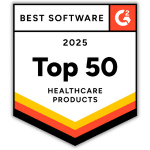Maintaining a safe and compliant dental office is crucial for both the well-being of patients and the staff. However, despite the best intentions, dental offices can inadvertently violate the Occupational Safety and Health Act (OSHA) regulations. These violations not only jeopardize the safety of everyone involved but can also result in hefty fines. Let’s explore some of the most common dental OSHA violations and look at insights on how to avoid them.
Dreadful Dental Offenses: Unveiling the Most Frequent Dental Office OSHA Violations
The dental industry witnesses a myriad of OSHA violations that could compromise patient safety and staff well-being:
1. Lack of Bloodborne Pathogens Training
One of the most frequent dental OSHA violations is a failure to provide adequate training on bloodborne pathogens. Dental professionals are at risk of exposure to pathogens such as:
- HIV
- Hepatitis B
- Hepatitis C
This is due to their close contact with patients’ blood and bodily fluids. OSHA requires employers to implement comprehensive training programs that cover proper handling of contaminated materials, use of personal protective equipment (PPE), and protocols for cleanup and disposal. Failing to train employees properly puts both patients and dental staff at risk.
2. Inadequate Record-Keeping
Accurate recordkeeping is essential to ensure compliance with OSHA regulations. Many dental offices fail in this aspect by neglecting documentation or maintaining incomplete records. It is crucial to keep detailed records of:
- Employee Training Sessions
- Medical Surveillance
- Hazard Assessments
- Any Incidents that Occur in the Workplace
By maintaining thorough records, dental offices can demonstrate their commitment to OSHA compliance if an inspection were to occur.
3. Improper Use or Lack of Personal Protective Equipment (PPE)
Personal protective equipment (PPE) serves as a barrier between dental professionals and infectious agents or hazardous materials. Common PPE used in dental offices include:
- Gloves
- Masks
- Face Shields
- Goggles
- Protective Clothing
Unfortunately, improper use or inadequate provision of PPE remains a significant violation found during OSHA inspections in dental practices. Employers must ensure that all employees have access to suitable PPE and receive training on proper usage and disposal.
4. Inadequate Hazard Communication
Dental offices often fail to provide comprehensive hazard communication programs, which is another frequent dental OSHA violation. Hazard communication includes:
- Properly Labeling Hazardous Materials
- Maintaining Safety Data Sheets (SDS)
- Effectively Training Employees about Potential Hazards
Dental practices should establish protocols for identifying, handling and storing hazardous chemicals, such as disinfectants or x-ray processing solutions. Additionally, dental professionals must receive thorough training on understanding safety data sheets to be aware of the risks associated with various substances.
5. Lack of Respiratory Protection
Many dental procedures produce aerosols that can contain infectious particles. However, some dental offices neglect to implement respiratory protection programs or fail to ensure their staff has access to appropriate respirators when needed. OSHA requires employers to evaluate potential respiratory hazards and provide adequate respiratory protection if necessary. Dental professionals should use N95 respirators or higher filtration masks during procedures that generate aerosols to prevent inhaling harmful pathogens.
Ultimately, by proactively addressing these common dental OSHA violations, dental offices can significantly reduce the risk of fines and create a safer environment for both patients and staff members. Implementing a comprehensive training program on bloodborne pathogens, maintaining accurate recordkeeping, ensuring proper use of PPE, establishing robust hazard communication protocols, and providing respiratory protection are all crucial steps toward achieving compliance.











